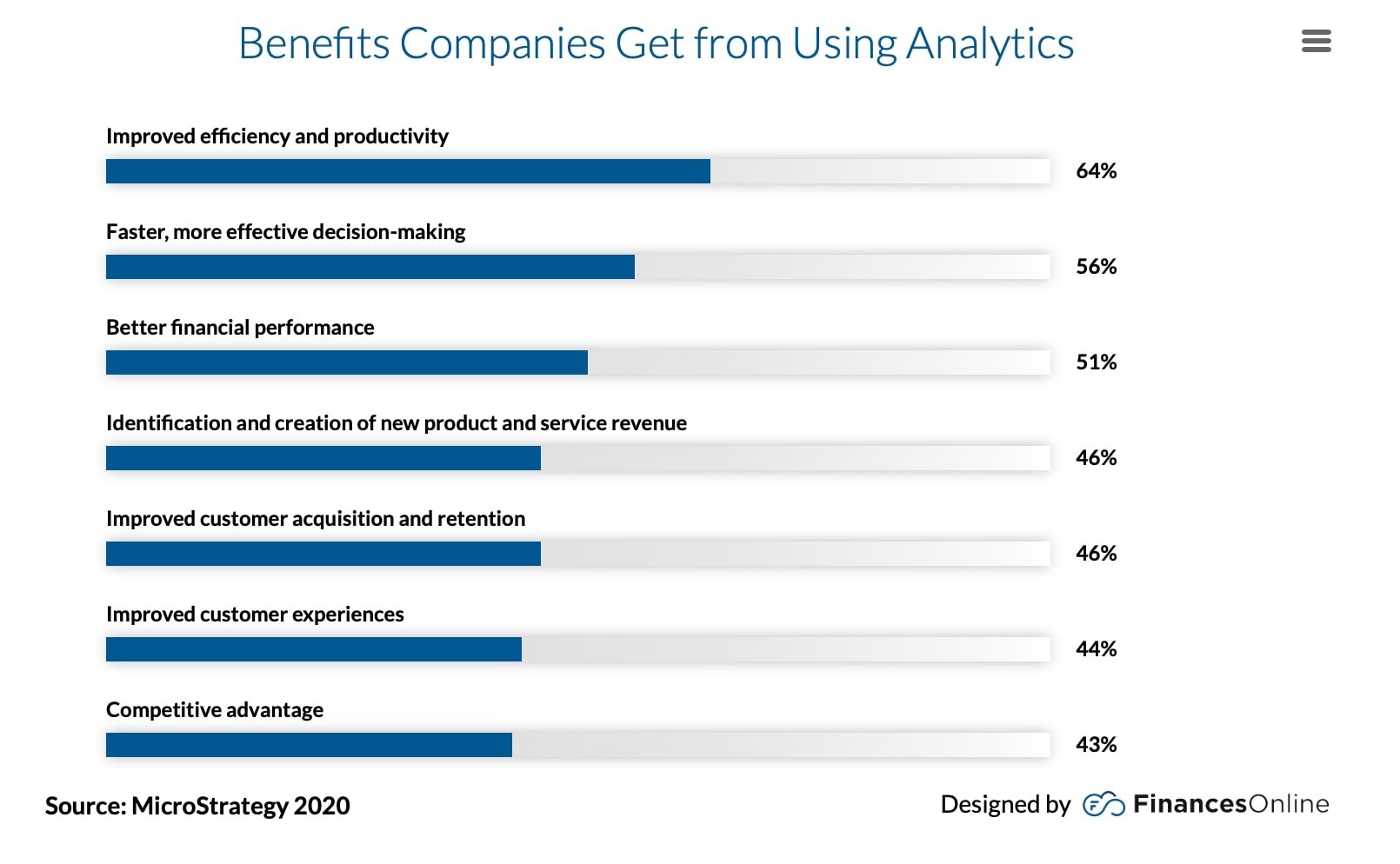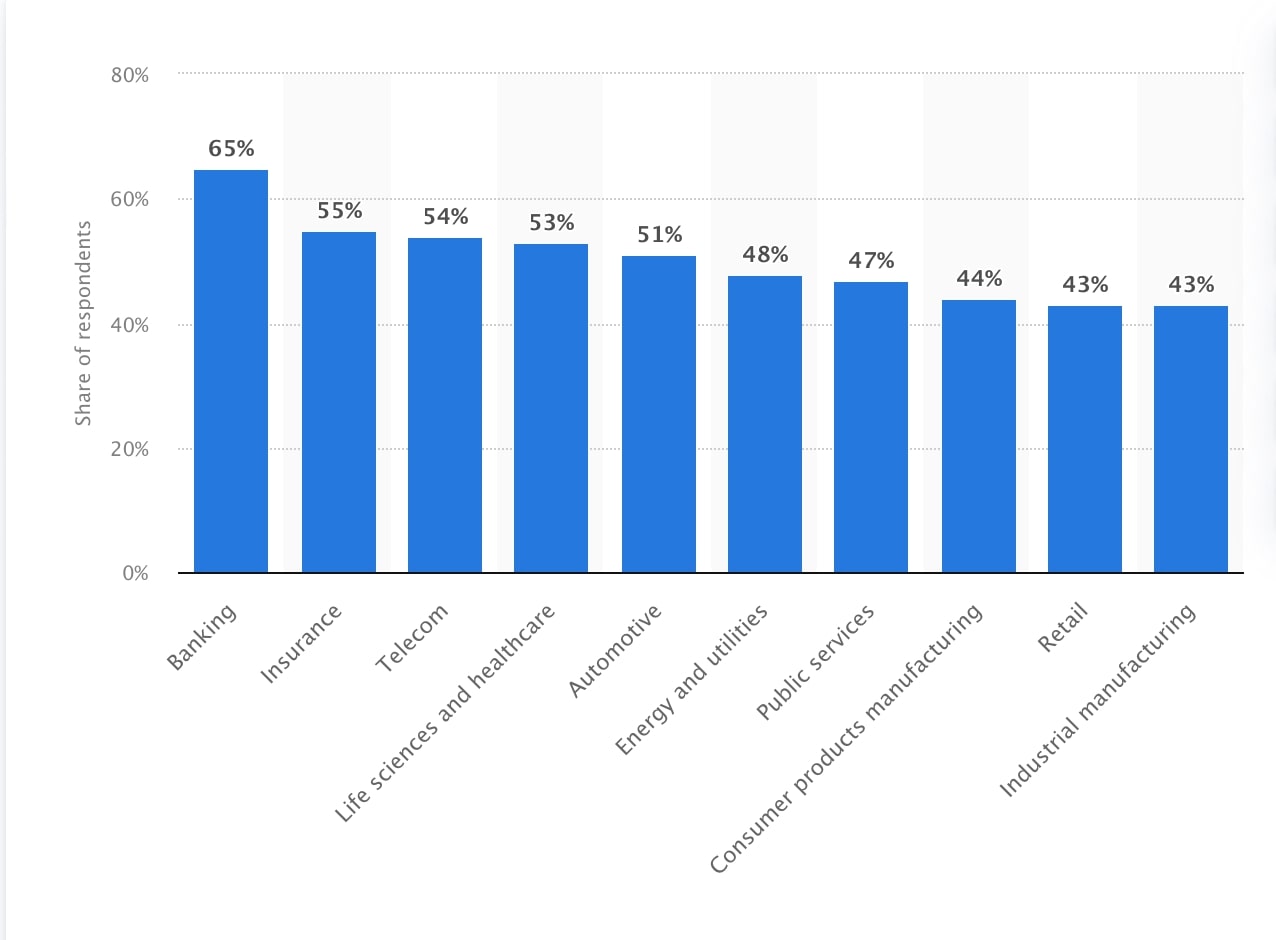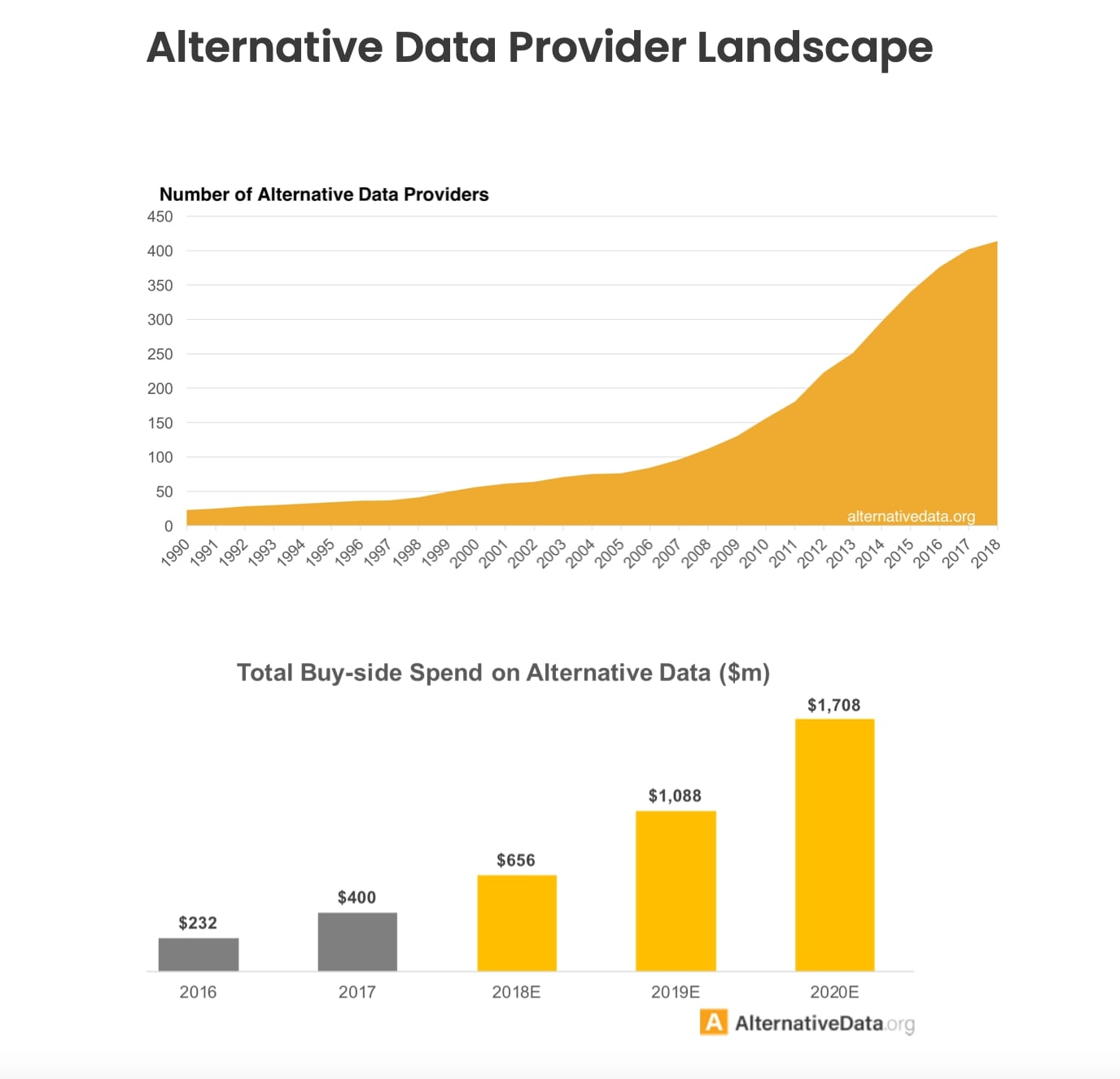Were the hieroglyphs of Ancient Egypt humanity’s original form of “big data” collection? Many people believe that cave paintings were made specifically to record and store vast amounts of complex information, including things like maps, astronomical charts, and population data. It makes sense: human instinct has long sought to organize and understand the world that surrounds us. Today isn’t so different.
Welcome to the web data revolution. It’s often said that the modern gold rush won’t be mining for minerals or materials, but rather for web data. Like the hieroglyphs of ancient times, big data is completely transforming our perspective on the world as companies, entrepreneurs, and individuals can collect and view large data sets and translate them into actionable insights. This means a kind birds-eye-view of the situation, and therefore an enormous competitive advantage when making important decisions.
In today’s digital age, the possibilities presented by web data are limitless. Public web data plays a crucial role in just about every industry, with everyone from Fortune 500 companies who seek to outsmart competition with in-depth market research and smarter solutions, to universities’ providing evidence-based research, to data scientists applying data to state-of-the-art AI capabilities. Data collection is even tackling the world’s largest problems, with web data helping to solve some of the most pressing social and environmental dilemmas today.
So, where’s the catch?
Despite all the modern advances attributed to the public web data revolution there are still an incredible amount of barriers online to collecting, organizing, and structuring public data, which, yes, is accomplished transparently, legally and ethically. While many organizations are pushing for more accessible public data, usually a private tool must be purchased to gather public web data.
So, if data is the burgeoning golden super hero of today–a modern scrawl of hieroglyphs fostering an incredible advantage unlike any prior epoch–then let’s dig deeper. In the following, we’ll explore the most common types of data collection tools, the most interesting current use cases for web data, and take a look at the many exciting opportunities in reach for businesses today through web data.
Table of Contents:
- What is Web Data Collection?
- Why You Need A Tool to Collect Data
- Defining Web Scraping and How Web Data is Collected
- Three Popular Web Data Use Cases
- Using Data for Social Impact and Climate Change
- What Type of Data Collection is Right For You and Your Business
What is Web Data Collection?
Any information that is publicly available on the internet can be collected and applied to establish a dataset. These pieces of information can then be used to answer business questions, power algorithms, or compete with other businesses, for example.
Today, there are three main ways that web data can be collected: research-based / qualitative data collection, paid proprietary data collection tools, or purchasing pre-collected datasets.
Research-Based / Qualitative Data Collection
While time-consuming, this approach is for companies that want to take a more hands-on, personalized approach to better understand target audiences, employees, and key industry actors. Qualitative data is generally obtained via:
- Surveys
- Interviews
- Search Engine trends
Proprietary Data Collection Tools
Data collection tools are built by private companies. These tools are based on complex, global networks of real-peer devices which allow users to get an accurate picture of their target audience or competitors. Users don’t have to build or maintain these systems. By plugging into a purchased automated tool, the information can be fed to both algorithms and team members. Implementation is immediate, and no code is needed, as data is delivered in a format that is already structured, cleaned, and synthesized.
Ready-to-use Datasets
Pre-collected datasets can be purchased from third party providers by individuals or organizations and are a cost-effective way to understand market trends. There are a number of types of datasets, depending on the research needed, varying from datasets provided periodically to dynamic datasets that are constantly updated with new information.
The most thorough form of datasets are called Merged/Enriched Datasets, which provide a complete data trove of information collected across multiple target sites to give a better view of a given business question or challenge. For example, public opinion regarding a certain stock or product across four different social media platforms (Reddit, Facebook, Instagram, Twitter).
Why You Need A Tool to Collect Data
While the collection and analysis of public web data is a significant positive development for both businesses and society alike, it simply isn’t accessible enough today to efficiently accomplish at scale without the help of a web collection tool.
A web data collection tool, such as those presented by industry leaders Bright Data, is highly recommended for your business to fully take advantage of the web data revolution. According to Finance Online the top benefits of web data collection and analytics include improved efficiency and productivity, faster and more effective decision-making, better financial performance, identification and creation of new product and service revenue, improved customer experiences, and improved competitive advantage.

Defining Web Scraping and How Web Data is Collected
Most automated web data collection tools are referred to as “web scraping”. Businesses use web scraping to extract their mission-critical data in order to gain an informational advantage and become leaders in their industry. Think of web-scraping as the “secret sauce” behind the competitive advantage of many of the world’s most successful businesses today.
Typically companies will employ an automated web scraping data collection tool in order to help them deal with common issues such as:
- Target site blocks
- Managing multiple concurrent requests from numerous geolocations
- Being served misleading information (Eg. getting the wrong price of a product from a competitor)
On a practical level, web scraping manually is difficult and time-consuming. Web scraping tools and their process of accessing, collecting, and storing target web data for teams and algorithms, hold numerous advantages. Web scraping tools are:
- auto-piloted and fast
- flexible and scalable
- relatively cost-efficient as they leverage the proprietary technology already developed to save time and manpower
Web scraping is a truly revolutionary tool. With its uncanny advantage, businesses can discover new opportunities, better understand target audiences, and improve end user experiences.
Because web scraping manually is not that easy or practical, companies, institutions, and entrepreneurs alike all opt for a purchased data collection tool that fully automates the web scraping process, allowing businesses to instead focus on what they do best.
In the following section, let’s explore a series of use cases to better understand the competitive advantage of businesses using data collection tools.

Three Popular Web Data Use Cases
E-Commerce Platform: Price Analysis and Market Research
Retail has always been an incredibly competitive industry – Online, e-commerce companies struggle with ‘data cloaking’, accessing GEO-specific data, understanding consumer consensus, and getting a real-time feed of competitor activity. In response, industry leaders today are achieving above-average sales cycles by harnessing the power of web data.
Imagine a small marketplace vendor that wishes to increase online sales. By purchasing “datasets” from a top global data company, all competitors’ current pricing of every item will be mapped out. The product team can opt to have these datasets refreshed hourly to identify when any competitor’s price drops. Because of this, the company will be able to significantly decrease the number of customers they lose to competitors.
Or, imagine a household men’s fashion brand missing a huge consumer segment by not having a robust social media presence. They want to source user-generated social media content to analyze trends, make better merchandising choices, and attract a new audience by understanding the consumer better.
With a proprietary data collection tool, they can see a real-time feed of what is trending on Instagram, and see what product has the highest sell-through rate region by region. They can also gain access to competitor customer reviews to better learn consumer needs, and tackle an improved merchandise from the ground up.
Travel Industry: Crucial Market Dynamics Unlocked
Web data lets travel companies see travel market dynamics via region, price, supply chain, or inventory. It also shows consumer behaviors. Web data reveals what customers are doing, divulges critical trends, and can anticipate what competitors will do next.
The main difficulties in gathering information are that competitor sites block data collection when they detect a single IP sending too much traffic, and many sites block requests that originate outside of their geography. Using an API can carry with it numerous challenges, like stale data, a limit on concurrent requests and calls, and batch size limitation.
By working with a data collection company, OTA’s are able to supercharge their operations. By using a data collection network that has access to rotating residential IPs, an OTA can circumvent the previously listed pain points. Data is accurate and retrieved in real-time by using the proxy network, and it’s all completely legal.
Financial Market and Alternative Data: Informational Advantage for Investment Houses
Traditional financial data includes a company’s SEC filings, publicly filed quarterly reports, and the daily / weekly / monthly trading volume of a stock. Alternative data, meanwhile, is data generated by users, investors, and companies based on real-time activities. For example, social media sentiment, satellite imagery of factory and delivery routes, and consumer transactions pointing at sales volume.
By using alternative data, investment houses and Hedge funds can monitor social media, search engine, and consumer demand data to get real-time alerts when companies in their portfolio are mentioned. Integrating alternative data is having a huge impact on Hedge funds, as it shows trends that couldn’t otherwise be discovered with quarterly reports or traditional financial data.
With zero-code data collection tools, investment houses can put their financial data monitoring, collection and discovery on autopilot. They receive a real-time feed of data sent directly to analysts or investment algorithms.
Likewise, pre-collected datasets provide game-changing information for investment houses. It means, for example, that a venture capitalist can have a potential investment recommended over lunch, and by dinner, they can know if it’s a promising enterprise. Structured datasets are delivered in minutes, and then it is the team of analysts who make an informed decision.

The global alternative data market is expected to grow at 46.5% annually and be worth $13.91 billion by 2026. Alternative data is truly an exciting new competitive advantage for those harnessing its power. While still in its infancy, early adopters are fast learning the gain on informational market advantage. A recent study even showed that alternative data is proving to be key for important decision making in the financial sector.
Using Data for Social Impact and Climate Change
The web data revolution isn’t limited to businesses; it likewise is transforming the world through social impact and environmental solutions. Organizations like the Bright Initiative, for example, exist today to provide NGOs, NPOs, academic institutions, and public bodies with entirely pro-bono access to leading data collection technology and expertise to drive social change. Today, over 600 organizations have joined the Bright Initiative, and that number is growing.
Data is making a huge impact in the following areas:
- Providing educational programs and supporting research
- Promoting environmental protection initiatives and powering public well-being organizations
- Driving web transparency initiatives and global regulations
- Driving public policy and strategies to benefit our economy and society
These vital projects are having a huge impact on the world and the people living in it. Public web data collection helps drive positive progress in human rights, regulation, climate change, public health and Internet safety.
What Type of Data Collection is Right For You and Your Business
Today, the web data adoption curve is accelerating fast. Users are asking smart questions and finding valuable answers across every possible domain, with web data collection tools helping to access, organize, and prepare target datasets for immediate usage to make the smartest business choices.
Choosing a web data tool for your company’s needs can feel like a research-intensive task, but it doesn’t have to be. Here is a checklist of questions that you can ask in order to see if a provider is a good fit for you and your business:
- Is data a priority for my company’s competitive advantage?
- Do I prefer to invest in the analysis of data?
- Is my priority instead to streamline the data collection process and never get stuck?
- Do the offered tools have zero coding/infrastructure or are there undisclosed technical backend tasks that will slow down the data collection process?
- Is the pricing model straightforward with no hidden fees?
- Is the quality of the data high, and is it sourced in an ethical/compliant manner?
From there, you should be able to determine what type of data collection tool, and from which provider, is best for your business needs.
Takeaway
“The internet is the largest public database ever created,” says global data expert and Bright Data CEO Or Lenchner. “However, it is not the most transparent, and access to large-scale web information can become a complex mission. If organizations wish to remain relevant and maintain their competitive edge, they need access to web data.”
This is why there are a number of SaaS companies today offering brilliant tools and solutions to access web data in the most efficient, reliable, and flexible way. The future of data looks incredibly bright with it being positively used to shift paradigms, revive economies, help the environment, solve crime, and foster competitive advantages. Staying ahead of the curve today means harnessing the power of the web data revolution to fuel your mission with the right information and actionable insights.






